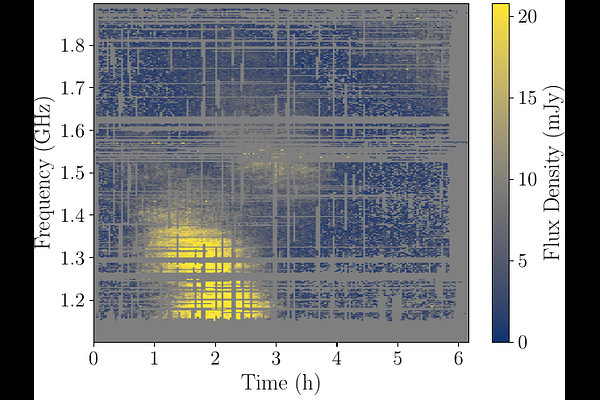The NANOGrav 15-Year Data Set: A Case Study for Simplified Dispersion Measure Modeling for PSR J1455-3330 and the Impact on Gravitational Wave Sensitivity

The NANOGrav 15-Year Data Set: A Case Study for Simplified Dispersion Measure Modeling for PSR J1455-3330 and the Impact on Gravitational Wave Sensitivity
Michael T. Lam, David L. Kaplan, Gabriella Agazie, Akash Anumarlapudi, Anne M. Archibald, Zaven Arzoumanian, Paul T. Baker, Paul R. Brook, H. Thankful Cromartie, Kathryn Crowter, Megan E. DeCesar, Paul B. Demorest, Timothy Dolch, Elizabeth C. Ferrara, William Fiore, Emmanuel Fonseca, Gabriel E. Freedman, Nate Garver-Daniels, Peter A. Gentile, Joseph Glaser, Deborah C. Good, Jeffrey S. Hazboun, Ross J. Jennings, Megan L. Jones, Matthew Kerr, Duncan R. Lorimer, Jing Luo, Ryan S. Lynch, Alexander McEwen, Maura A. McLaughlin, Natasha McMann, Bradley W. Meyers, Cherry Ng, David J. Nice, Timothy T. Pennucci, Benetge B. P. Perera, Nihan S. Pol, Henri A. Radovan, Scott M. Ransom, Paul S. Ray, Ann Schmiedekamp, Carl Schmiedekamp, Brent J. Shapiro-Albert, Joseph Simon, Ingrid H. Stairs, Kevin Stovall, Abhimanyu Susobhanan, Joseph K. Swiggum, Haley M. Wahl
AbstractEvidence for a low-frequency gravitational-wave background using pulsar timing arrays has generated recent interest into its underlying contributing sources. However, multiple investigations have seen that the significance of the evidence does not change with choice of pulsar modeling techniques but the resulting parameters from the gravitational wave searches do. PSR J1455-3330 is one of the longest-observed pulsars in the array monitored by the North American Nanohertz Observatory for Gravitational Waves (NANOGrav) but showed no evidence for long-timescale red noise, either intrinsic or the common signal found among many pulsars in the array. In this work, we argue that NANOGrav's piecewise-constant function used to model variations in radio-frequency-dependent dispersive delay should not be used for this pulsar, and a much simpler physical model of a fixed solar wind density plus a linear trend in dispersion measure is preferred. When the original model is replaced, (i) the pulsar's timing parallax signal changes from an upper limit to a significant detection, (ii) red noise becomes significant, and (iii) the red noise is consistent with the common signal found for the other pulsars. Neither of these signals are radio-frequency dependent. While the same physical motivation will not apply to many of the pulsars currently used in pulsar timing arrays, we argue for careful physically-motivated timing and noise modeling of pulsars used in precision timing experiments.